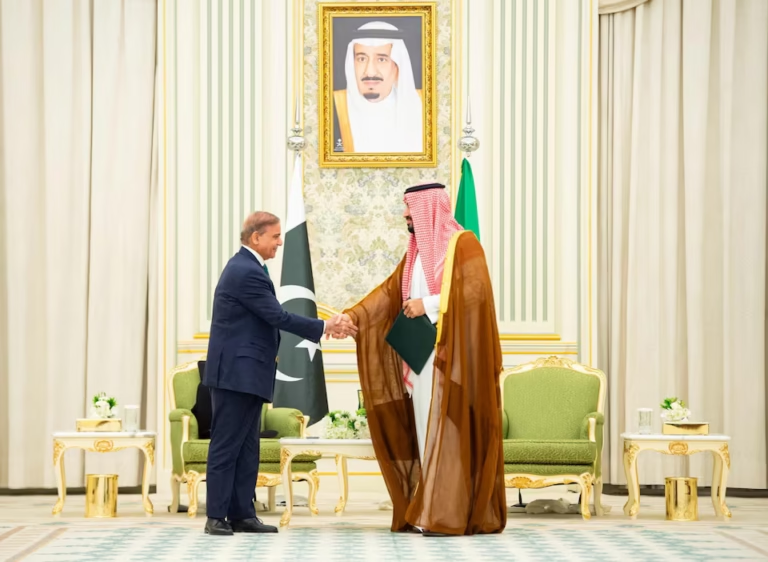New Delhi — Despite being at very different economic scales, both India and Pakistan continue to struggle with high levels of hunger and poverty, as revealed in the Global Hunger Index (GHI) 2024. The report ranks India 105th and Pakistan 109th out of 125 countries, placing both in the “serious” hunger category.
India, with the world’s fourth-largest economy by purchasing power parity, still reports widespread malnutrition and poverty. Meanwhile, Pakistan, plagued by years of instability and economic crises, faces mounting challenges in ensuring food security for its people.
How the Numbers Stack Up
| Indicator | India | Pakistan |
|---|---|---|
| GHI Score (2024) | 27.3 (Rank 105) | 27.9 (Rank 109) |
| GDP per capita (USD, est. 2024) | ~$2,700 | ~$1,600 |
| Population under $3.65/day | 28.1% ≈ 390 million | 42.3% ≈ 102 million |
| Population under national poverty line | 10.4% ≈ 145 million | 21.9% ≈ 53 million |
According to recent World Bank estimates, nearly 42% of Pakistanis (102 million) and 28% of Indians (390 million) live below the international poverty threshold of $3.65 per day. In nominal terms, India’s average income is around $2,700, substantially higher than Pakistan’s $1,600, yet the hunger gap remains stubbornly wide in both nations.
Pakistan: War, Disasters, and Economic Decline
Pakistan’s hunger crisis is compounded by multiple interlocking challenges: prolonged conflict, economic mismanagement, and natural disasters. According to World Bank data, over 42% of the population, or roughly 102 million people, live below the lower-middle-income poverty threshold of $3.65/day.
An additional 53 million people fall under the national poverty line. Analysts attribute this to the long-term impact of the “war on terror,” political instability, and climate shocks such as the devastating 2022 floods that displaced millions.
“The resources spent on internal security and emergency responses have severely limited investments in healthcare, food programs, and rural development,” said a senior economist at the Pakistan Institute of Development Economics. “Pakistan’s poverty is now deepened by inflation, currency devaluation, and external debt.”
In rural areas, where agriculture remains the primary livelihood, food prices have soared, while purchasing power continues to fall. Malnutrition among children and women remains worryingly high, particularly in provinces like Balochistan and Sindh.
India: Hunger Amid Economic Growth
India, despite its $3.7 trillion economy and rising global clout, remains home to 390 million people living below the $3.65/day threshold and 145 million people under its national poverty line.
The contradiction is stark: while India’s economy grows, malnutrition remains rampant. According to GHI indicators:
-
30.9% of Indian children are stunted (chronically undernourished)
-
17.3% are wasted (suffering from acute undernutrition)
“India’s hunger isn’t due to food shortage—it’s due to inequality, inadequate distribution, and poor nutrition education,” said Dr. Renu Sharma, a public health expert at Jawaharlal Nehru University.
Much of India’s poor population lives in rural areas or urban slums, where access to quality healthcare and sanitation is limited. Analysts point to inefficiencies in public food distribution, underfunded health programs, and bureaucratic delays that leave millions without adequate support.
Same Problem, Different Paths
Despite India’s stronger economic fundamentals and Pakistan’s structural vulnerabilities, both countries face a common humanitarian crisis. Hunger, especially among children and vulnerable populations, remains a deep-rooted issue.
India’s challenge lies in redistributing the gains of its economic growth, ensuring that marginalized groups benefit from public nutrition, education, and healthcare schemes.
Pakistan, meanwhile, must focus on restoring stability, repairing infrastructure, and investing in long-term food security initiatives. Without structural reforms and better governance, analysts warn that Pakistan’s already fragile social indicators may worsen.
Conclusion: A Shared South Asian Burden
With a combined population of over 1.6 billion people, India and Pakistan together account for nearly half a billion people living in poverty—a staggering 490 million, many of whom face hunger on a daily basis.
As global institutions call for urgent action, the latest Global Hunger Index is a clear signal to South Asia’s leaders: economic growth alone is not enough. Targeted, inclusive development policies are needed now more than ever.

Nikhil Sharma is a seasoned news editor at TheDailyNewsTimes.com, based in India. With over a decade of experience, he specializes in political, entertainment and cultural journalism. His editorial leadership delivers balanced, impactful content for a global audience. Nikhil’s dedication to truth has earned him widespread respect in the industry.
















